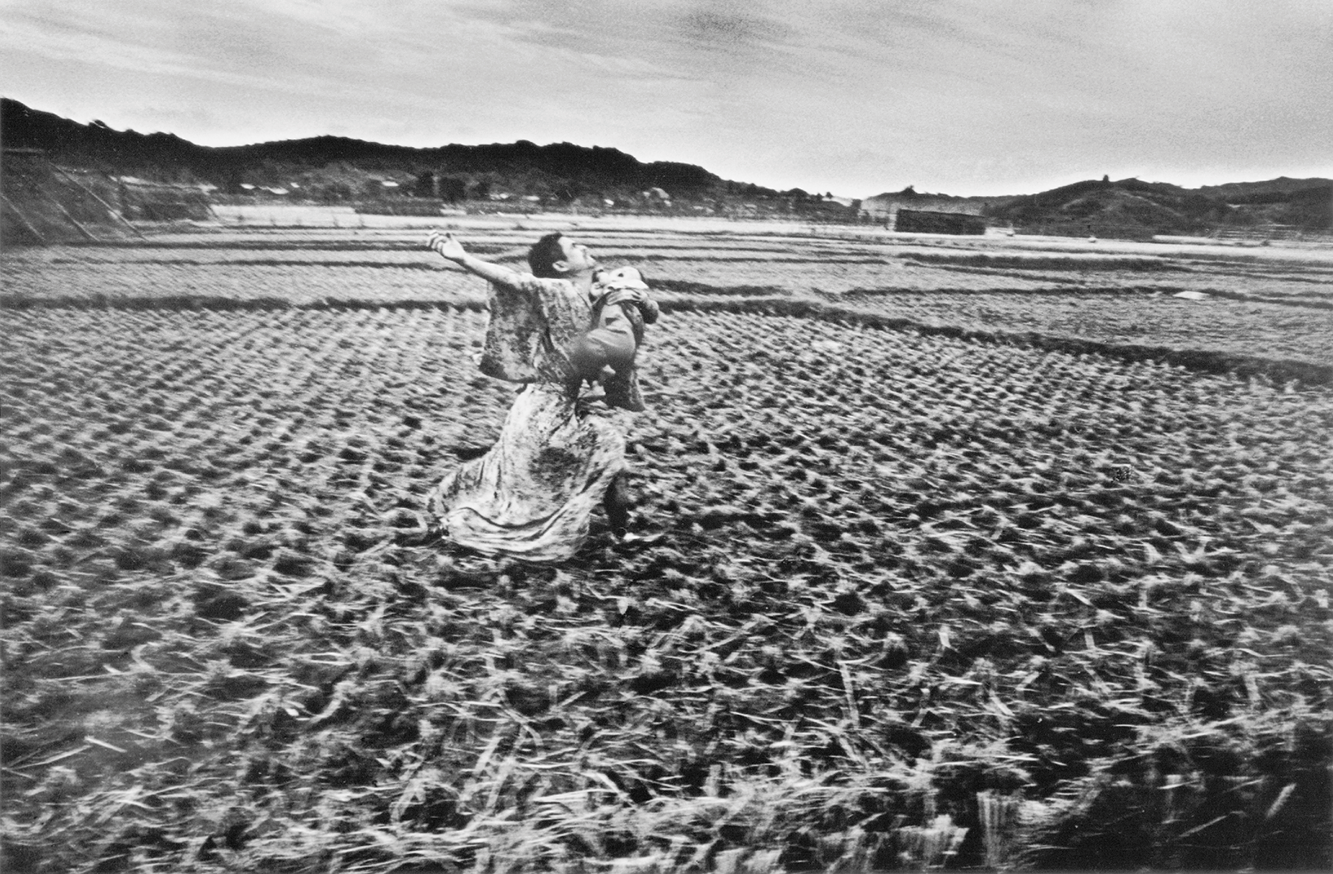
One day, Eikoh Hosoe stopped by and whisked me away to a mysterious world. I had previously seen magical works produced by the camera, but Hosoe’s works did not suggest magic so much as they displayed a quality of mechanical wizardry, as he used this civilized instrument of precision to its utmost against civilization. The world into which I was ushered by the wizardry of his lens was alien, contorted, derisive, grotesque, barbaric, and dissipated, and yet it was also a realm in which the murmurs of a pure undercurrent of lyricism flowed through some unseen conduit.
In other words, it was the reverse of the world we inhabit. In contrast to the world we live in, in which our reverence for social propriety—our emphasis on public morality and public hygiene—have created an underground of filthy meandering sewers, the place Hosoe spirited me away to was a bizarre and monstrous city—naked, comical, vicious, cruel, flamboyant —and yet bright rivers of lyricism coursed endlessly through its subterranean passages.
Ah yes. The city I was taken to was a strange one. A city on the map of no country, a city of horrifying serenity, where death and eros cavorted as they wished in the plazas at midday. We stayed in that city from the fall of 1961 to the summer of 1962. This is the travelogue produced by Hosoe’s camera.

******〇〇〇〇〇〇〇〇〇〇〇〇◎◎◎◎◎◎◎◎◎◎
I learned that, in front of Hosoe’s camera, neither my spirit nor my psyche was required. This was a circumstance I had always yearned to be in, and the experience made my heart dance. Just as novelists use words and composers use sound, Hosoe, with the camera as his medium, placed his subjects in a variety of groupings, wielding light and shadow to make these groupings possible. In other words, these were his words, these were his sounds. The various meanings of his subjects are stripped away and tossed into an assemblage with no meaning, and these mutually senseless reflections restore a kind of order to the light and shadow. Just as with words and sounds, in order to secure the abstract quality of the work’s components, the subject of the photo must first, as a prerequisite, possess a meaning that must then be stripped away.

This is why it was necessary for his model to be a peculiar novelist, and for the backdrop to be Renaissance paintings and Spanish Baroque furniture. This was not a satirical or parodic process, but his unique method for achieving abstraction. His incorporation of Giorgione’s Sleeping Venus and Botticelli’s Birth of Venus into his shots is entirely different to Dalí’s monomaniacal parody of [Miller’s] The Angelus. In place of words and sounds as his abstract elements, a photographer must begin with this kind of process of abstraction in order to create a work that is a substitute for his spirit, as artists in other genres do.
Only then can we begin to clearly define the subject’s exterior, only then are the conditions in place for the model’s eyes to be eyes, the model’s back to be a back. It was drilled into me, as a matter of course, that in front of Hosoe’s camera, both gazing into its lens and completely turning my back on it possessed the same meaning. If the flesh on my back and my retinas are both part of my exterior, then what possible meaning could there be in the act of my looking?
However, I was not the only one facing the predicament of not trusting his own eyes.
Hosoe himself, as the photographer, was in the same position. Peering through the view- finder, he was clearly waiting for the subject to metamorphize into the subject. His work throughout involved preparing himself by evaluating precisely the conditions under which his eyes would be gloriously betrayed. Stated differently, he prepared by evaluating the conditions under which he could triumphantly return to the primordial image already seen in his subconscious. In those moments, the subject was determined, fixed in place, and at times literally bound; together with the photographer he was offered up toward the uncertain metamorphosis that occurs through a carefully arranged and ritualized setting. Sometimes this happened, while at other times it did not. As for me, I placed myself into a world of objects where gazing at something or closing one’s eyes, rejecting something or accepting it, carry exactly the same meaning.

Yukio Mishima’s text ‘Introduction to Eikoh Hosoe (1963)’ from Eikoh Hosoe ed. by Yasufumi Nakamori (MACK, 2021).

Embossed hardback
25 x 32.5cm, 400 pages
ISBN 978-1-913620-24-0
September 2021
€65 £55 $80
Also available in Japanese





